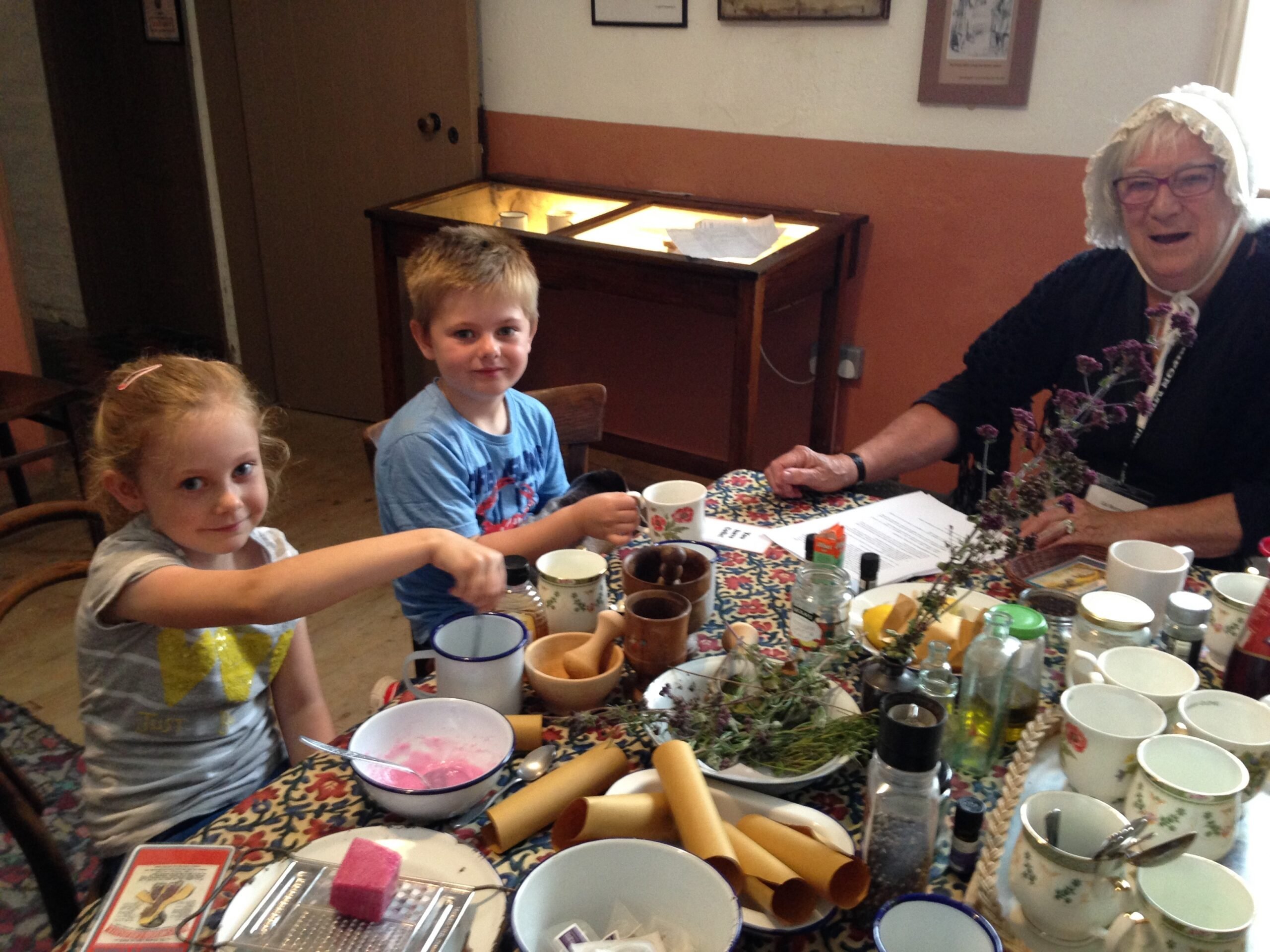
Grannies’ Cures activity at the Workhouse Museum
Photo: Ripon Museum Trust
Leaders for change
Claire Antrobus reveals how volunteers, trustees and staff at Ripon Museum Trust have developed their leadership and coaching skills, resulting in greater organisational resilience, better internal communication and clearer roles.
Ripon Museum Trust (RMT) is a small independent museum group with three sites that tell a story about law, order and social justice – the former courthouse, prison and police station and workhouse.
“I have felt more valued, and been given independence and responsibility to solve challenges and work collaboratively with management and colleagues”
Alongside the museum’s core staff team of three, more than 100 volunteers deliver the museum’s activities, including maintaining the original workhouse garden, delivering tours and learning events, caring for the buildings, front-of-house, book-keeping, collections management and fundraising.
Strategic workforce plan
Two years ago the trustees developed an ambitious strategic plan that recognised that if the museum was to make a bigger impact and secure its collection it had to invest in its leadership style and workforce development.
The plan also included the proposal to acquire part of the former workhouse site (Sharow View) which North Yorkshire County Council (NYCC) was planning to transfer into community ownership. This led to a successful application to Arts Council England’s (ACE) Resilience Fund and a grant of £85,000 in March 2015.
I started work on the project as the Leadership Associate in September last year, working alongside the new director. Our first step was to invite a cross-section of trustees, volunteers and staff to act as a combined steering group and project champions, known as the ‘Change Leaders’.
This group of 17 people collectively defined the project aim as “to build a stronger organisation with a shared vision and values, agreed ways of working, better internal communication and clearer roles and responsibilities”.
A shared vision
The first phase of the project, with support from People Make it Work, saw the Change Leaders develop this shared vision in the form of a set of four core values and associated behaviours, and a draft action plan.
The second phase of the project with Relational Dynamics 1st offered the Change Leaders training to develop skills and approaches needed to realise our vision. A key component of this training was a bespoke four-day leadership and coaching course covering high-level communication skills, goal-setting, action learning, understanding trust, feedback and difficult conversations.
The third phase entailed development and delivery of the action plan which was split into five ‘Learning in Action’ projects, each of which sought to improve one aspect of organisational resilience, such as improving quality and consistency of visitor experience, making fuller use of technology, improving internal communications and clarity of roles.
Threading throughout the year was the opportunity for Change Leaders to develop personal learning goals through external training and events, mentoring and study trips.
Very quickly we realised we had underestimated the impact of the project on the core staff, and two temporary part-time roles were created. This meant staff could take time away from their duties to visit other organisations and attend training, and also created some capacity to pilot and explore these new ways of working.
ACE was supportive of the need to reallocate funds from the training budget towards staffing capacity, and other changes we made to project design in response to feedback from the Change Leaders.
Coaching style of leadership
A year on since the project started, we are still in the process of turning the shared vision we developed into reality and expect that to continue for some time. The external evaluation shows we are well on track and that the in-house training, and particularly the coaching skills course, has led to improved clarity and openness of internal communications and increased trust.
Already by the end of the main coaching course people were seeing the benefits of a more coaching style of leadership. One participant noted in their feedback: “I have felt more valued, and been given independence and responsibility to solve challenges and work collaboratively with management and colleagues.”
The external evaluation revealed a shift away from assuming that one tier of the organisation has the answers towards drawing on the resource of the whole organisation to find them. As one staff member outlined in her initial thoughts about how she might apply the coaching skills she’d developed: “At the moment we have three layers – trustees, staff and volunteers – like a layer cake. It is hoped that using coaching techniques as a tool we can change the structure into more of a marble cake with more integrated participation in decision-making and responsibility for running the museums.”
Focusing on understanding our impact better through research, and using study trips to increase awareness of how other museums and other sectors, such as education, approach these issues has already paid dividends. The evidence collated through this project about the impact of volunteering, and ideas about co-curating, inspired by a study trip to Derby Museums, contributed to a successful £400,000 application to the Heritage Lottery Fund to acquire the Sharow View site.
Action learning skills
Finally, the group coaching or ‘action learning’ skills we developed are beginning to support the wider sector through a peer-learning event that York Museum Trust hosted in October. The event was attended by music, theatre and visual arts organisations in the Yorkshire region as well as museums, and we are hoping this peer-learning initiative will continue through an action learning set.
Claire Antrobus is an independent consultant.
www.claireantrobus.com
Further details of the project can be found on the museum’s blog.
Join the Discussion
You must be logged in to post a comment.